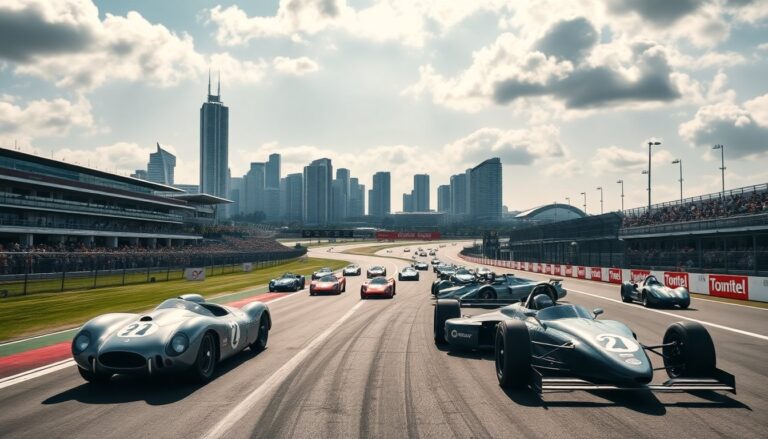Argomenti trattati
Motor sport has undergone a remarkable transformation since its inception in the late 19th century. Originally born out of a passion for speed and engineering, it has evolved into a multi-billion dollar industry that captivates audiences around the world. This article delves into the rich history of motor sport, examining how it transitioned from informal races to organized competitions and eventually to the professional leagues we see today.
At its core, motor sport is a celebration of human ingenuity and the relentless pursuit of performance. From the roaring engines to the sophisticated technology behind each vehicle, motor sport showcases the very best of automotive engineering. As we explore this evolution, we will also look at the cultural impact and the driving forces behind its growth.
The early days of motor sport
The roots of motor sport can be traced back to the Paris-Rouen race in 1894, which is often considered the first organized motor race. This event attracted a diverse group of participants, from inventors to wealthy enthusiasts, all eager to test their machines against each other. The race was not so much about speed but rather the reliability and efficiency of the vehicles, as the automobile was still a novel concept at the time.
As the 20th century progressed, motor sport began to gain traction, with events like the Indianapolis 500 and the Monaco Grand Prix establishing themselves as key fixtures in the racing calendar. These early races were characterized by a lack of formal rules and regulations, leading to a chaotic yet thrilling environment that captivated spectators. The advent of technology during this period also played a pivotal role in shaping the future of motor sport, as manufacturers began to invest in research and development to enhance their vehicles’ performance.
The rise of organized racing
The mid-20th century marked a significant turning point in the evolution of motor sport. With the establishment of regulatory bodies such as the Fédération Internationale de l’Automobile (FIA) in 1904, the sport began to adopt a more structured approach. The introduction of rules and safety standards improved the fairness of races and made them safer for drivers and spectators alike.
During this time, motor sport expanded beyond mere competition to become a significant cultural phenomenon. Iconic figures like Juan Manuel Fangio and Enzo Ferrari emerged, solidifying the connection between racing and celebrity. The Formula One World Championship, inaugurated in 1950, showcased the pinnacle of automotive engineering and attracted a global audience, setting the stage for what would become the most prestigious motor sport series in the world.
Technological advancements and safety measures
As motor sport continued to grow, so did the need for innovation and safety. The introduction of advanced materials, such as carbon fiber and aluminum alloys, revolutionized vehicle design, allowing for lighter and more durable cars. Additionally, the implementation of cutting-edge technology, including telemetry systems and simulators, enhanced the precision of performance analysis and driver training.
Safety measures also evolved significantly in response to tragic accidents that highlighted the inherent dangers of racing. The adoption of the HANS device (Head and Neck Support) and improved crash barriers dramatically reduced injury risks, making the sport safer for participants. These advancements not only protected drivers but also reassured audiences, contributing to the sport’s growing popularity.
The globalization of motor sport
By the late 20th century, motor sport had truly become a global phenomenon. The rise of international competitions, such as the World Rally Championship and the Formula E series, attracted diverse participants and fans from around the world. This globalization was further fueled by advancements in media coverage, allowing fans to engage with the sport through television and online platforms.
Moreover, the emergence of powerhouse teams like Mercedes and Red Bull Racing demonstrated the commercial potential of motor sport, attracting significant sponsorship and investment. This influx of capital not only enhanced team performance but also increased the reach of the sport, drawing more fans and partners into the fold.
The future of motor sport
At its core, motor sport is a celebration of human ingenuity and the relentless pursuit of performance. From the roaring engines to the sophisticated technology behind each vehicle, motor sport showcases the very best of automotive engineering. As we explore this evolution, we will also look at the cultural impact and the driving forces behind its growth.0
At its core, motor sport is a celebration of human ingenuity and the relentless pursuit of performance. From the roaring engines to the sophisticated technology behind each vehicle, motor sport showcases the very best of automotive engineering. As we explore this evolution, we will also look at the cultural impact and the driving forces behind its growth.1

